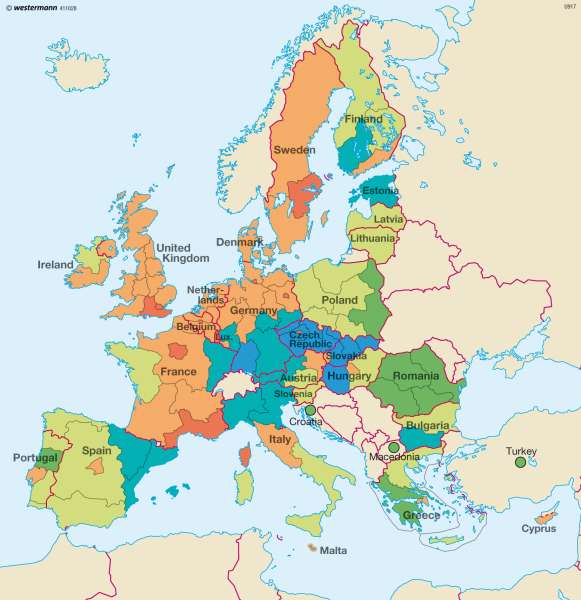EU — Regional employment structure
Europe - European regions
978-3-14-100790-9 | Page 40 | Ill. 2

Information
Decisive for the differing economic structures in the different parts of Europe was their naturally-given situation on the one hand, but even more on the other hand their historical, political and economic development since the beginning of the industrial era. Since substantial productivity differences exist between the individual sectors of the economy, the respective proportional shares of employment in agriculture, manufacturing industry and services give a first indication of both past and future development.Spatial Polarization
The agricultural regions with a high share of employment in the primary sector are situated in peripheral locations on the outer edges of the EU. On the other hand, those industrial regions that still have a high share of employment in the secondary sector profit from the advantage of their central location at the heart of the EU. Increasingly evenly distributed are the locations of the — in itself heterogeneous — tertiary sector, which has special importance with regard to structural changes in the regional employment situation. Important branches of the service sector, such as financial services, consulting, science, public and private administrations, are concentrated in particular in the metropolitan conurbations and centres of national decision-making.
Structural Change on the Labour Market
With the declining significance of access to nearby raw materials, above all in iron and steel manufacture, the older industrial regions faced increasing competition, initially from coastal locations, and then also from third countries. But even more than this, due to the development of newer technologies, a permanent shift has taken place in the employment structure in favour of the tertiary sector. In virtually all of the traditional industrial regions, the service sector has now attained an employment share of more than 50 percent.
For the heavily agricultural regions on the outer edges of the EU, this change in sectoral structure has the problematic consequence that, in future, they will have even fewer employment alternatives to offer in the manufacturing sector. While in some peripheral regions the natural resources necessary for tourism are available, there are also some port cities whose geographical situation could offer advantages in trading with markets outside the EU. Nevertheless, in the future, EU regional policy will increasingly need to take the tertiary sector into account in its regional promotion activities.
H. Müller, F.-J. Kemper; Ü: J. Attfield




